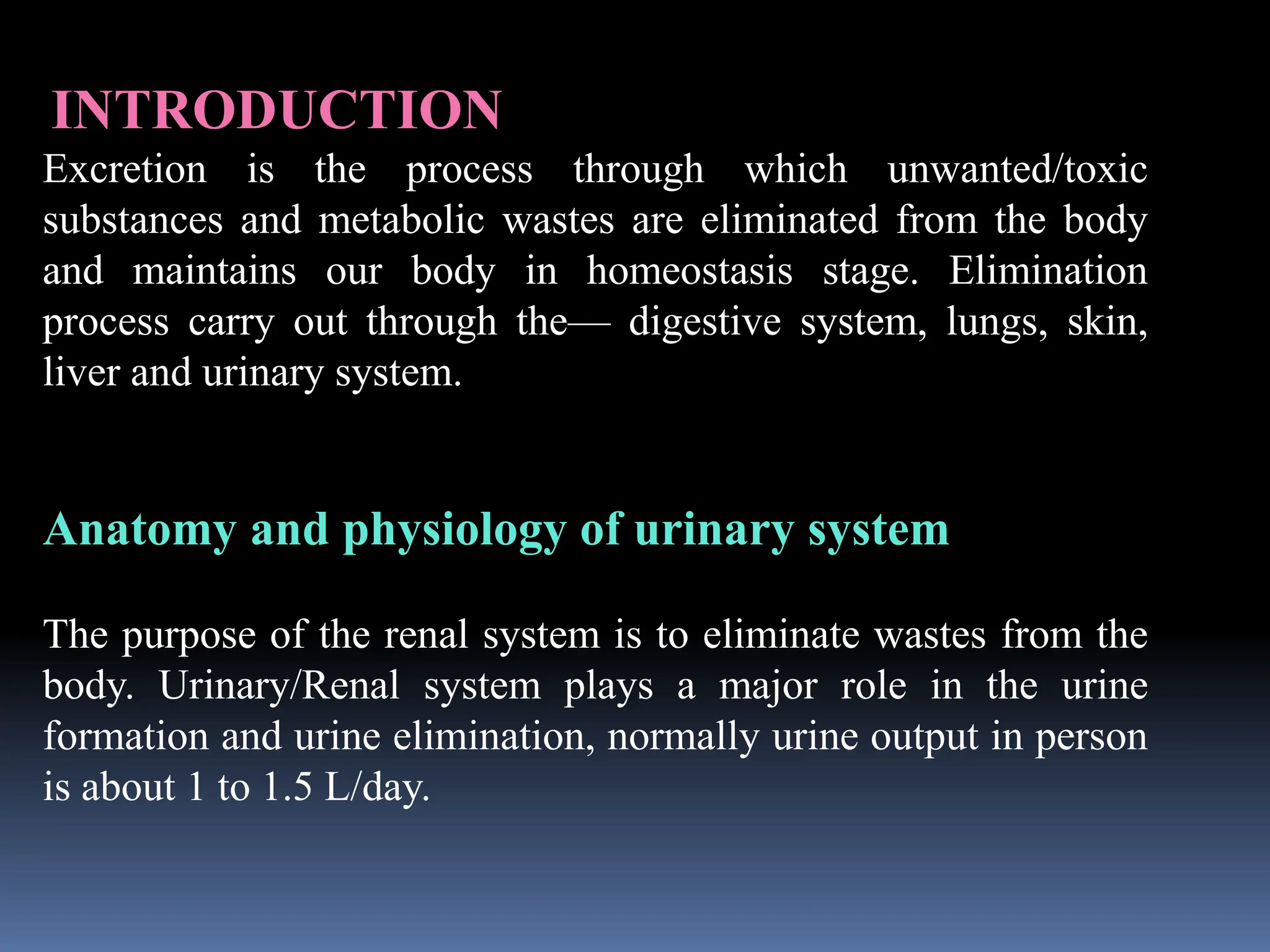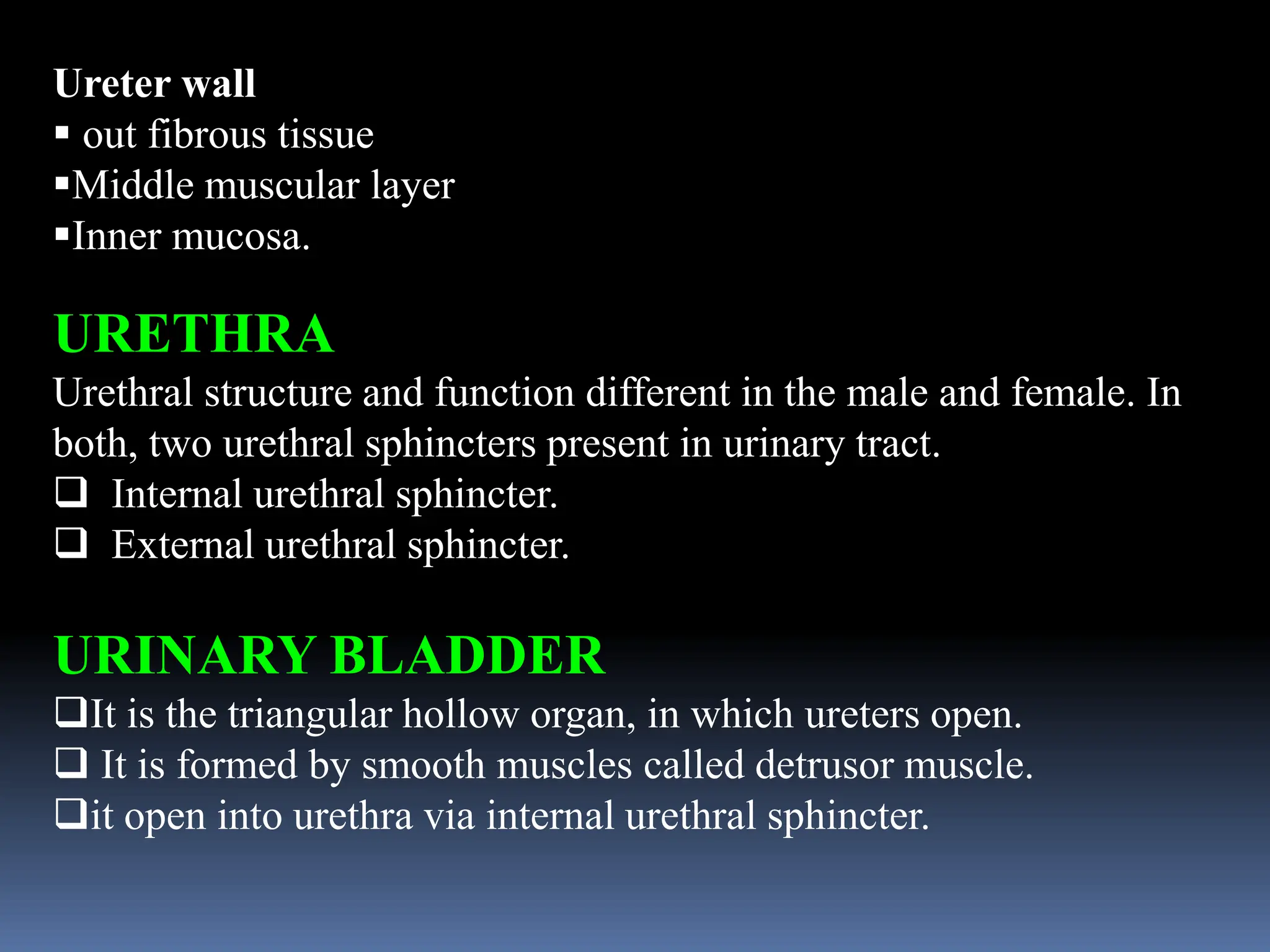The document provides information about the anatomy and physiology of the urinary system. It discusses the key components of the urinary system including the kidneys, ureters, urinary bladder, and urethra. It describes the internal structure of the kidneys and the functional unit of the kidneys called nephrons. It explains urine formation through glomerular filtration, tubular reabsorption, and tubular secretion in the nephrons. It also discusses micturition, renal function tests, and clearance tests used to evaluate kidney function.
























